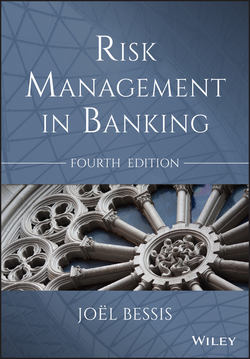Читать книгу Risk Management in Banking - Bessis Joël - Страница 10
1
RISKS AND RISK MANAGEMENT
1.3 Business Lines in Banking
ОглавлениеThere is a wide variety of business lines in the banking industry, with different management practices and different sources of risks. This section provides a brief overview of the diversity of activities conducted in banking.
Retail banking tends to be mass oriented and “industrial” because of the large number of transactions. Retail Financial Services (RFS) covers all lending activities to individuals, from credit card and consumer loans, to mortgages. RFS also extends to very small enterprises, such as those of physicians or home services. Lending decisions are based on a combination of automated systems and management monitoring. Statistical techniques are relevant for assessing credit risk.
Standard corporate lending transactions include overnight loans, short-term loans (less than one year), revolving facilities, term loans, committed lines of credit or large commercial and industrial loans. Such transactions are under the responsibility of credit officers and their reporting lines. For the large corporate businesses, relationship banking prevails when the relationship is stable, based on mutual knowledge. Credit analysts are industry specialists who monitor the credit standing of clients. They provide the individual credit assessments of obligors, based on expert judgment, for making lending decisions.
Investment banking is the domain of large transactions customized to the needs of large corporate and financial institutions. It also includes trading activities, under the generic name of “Corporate and Investment Banking” (CIB).
Large corporations demand a variety of services and products, for example from lending facilities and hedging instruments or issuance of securities. A number of very different activities are under the umbrella of the CIB pole. The financing of financial institutions, banks, insurance companies and brokers is organized as separate groups, distinct from those dedicated to commercial and industrial firms. Mergers and acquisitions form another business line.
All activities of specialized, or “structured”, finance are also conducted by dedicated units within CIB. The scope of specialized finance includes such activities as project finance, asset financing (ships or aircrafts), commodities finance, commercial real estate and exports. The risk analysis differs radically from the assessment of a corporate borrower. In general, the primary source of repayment is the cash flows generated by the asset(s), from its operations or from the sale of the asset(s). Structuring refers to the assembling of financial products and derivatives, plus contractual clauses (“covenants”) in order to make the risk manageable. Securitization is one of the fields of specialized finance: it consists of selling pools of loans, which are normally held in the balance sheet of banks, into the capital markets.
Trading involves traditional proprietary trading and trading for third parties. In proprietary trading, the bank is trading for itself, taking and unfolding positions to make gains. Trading is also client oriented. “Sales” designate trades conducted when the bank acts on behalf of their clients. The “sell side” is the bank, selling products to end-users. The “buy side” designates the clients, corporations and asset managers who buy the products, for example for hedging purposes. Traders and lending officers are not allowed to share information, as inside information on a corporate client could inspire trades based on undisclosed information. Banks are also exposed to market risk from their investment portfolio, which is not held for trading but with an objective of long-term performance.
Other activities do not generate directly traditional financial risks. For example, private banking, or asset management, is the activity of wealth management for third parties. Advisory services refer to consulting services offered by banks to corporations considering potential acquisitions, for example, which do not necessarily imply cash outlays. Risks are primarily legal and operational.
Figure 1.1 maps the banking activities grouped into main poles.
Figure 1.1 Business lines in banking
